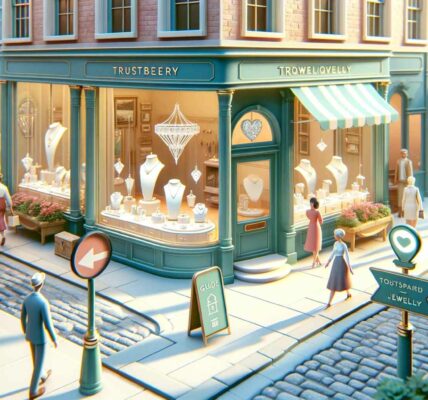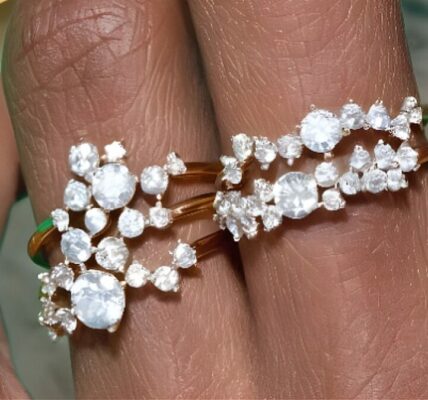Iconic Jewellery Designers of the 20th Century: Alexander Calder: Sculptural Wearable Art
Alexander Calder made unparalleled contributions to 20th-century jewellery design, which blurred the boundaries between sculpture and wearable art. Known for his groundbreaking use of non-traditional materials such as brass and broken glass, Calder crafted approximately 1800 pieces that resonated with both industrial strength and poetic grace.
Influenced by ancient art and Surrealism, his work appealed to luminaries like Peggy Guggenheim and Georgia O’Keeffe. Despite his acclaim, many aspects of Calder’s creative path and techniques invite further exploration. What led Calder to adopt such a distinctive route in design, and how did his philosophy shape his iconic creations?
Article Contents
Calder’s Creative Journey
Alexander Calder’s creative journey in jewellery design began in the early 1930s, when he started crafting pieces for his wife and close friends, mainly using materials like brass and silver. His odyssey burgeoned from a confluence of cultural inspirations and personal motivations.
Calder, a pioneer seeking freedom in artistic expression, absorbed diverse influences from his travels between the United States and Europe. This exposure enriched his perspective, igniting a fascination with ancient art forms such as the fringe necklace, renowned for its universal appeal across cultures. The allure of African jewellery, particularly intricate woven metal wire designs, captured Calder’s imagination, reflecting his keen eye for beauty beyond the conventional.
Approximately 1800 pieces of jewellery were produced over his lifetime, showcasing Calder’s innovative use of basic fabrication techniques without welding or soldering. Inspired by the avant-garde spirits he encountered in Parisian circles, including the likes of Marcel Duchamp and Joan Miro, Calder channelled their cutting-edge philosophies into his wearable art. Each piece emerged as a tribute to his belief in the fusion of art and life.
Over the years, his patrons included influential figures such as Peggy Guggenheim and Georgia O’Keeffe, which further solidified his status in the art world. Calder’s personal motivations propelled him to push boundaries—transcending mere adornment. His designs resonated with those who relished individuality and liberation, culminating in a timeless collection that harmonises cultural enrichment with personal passion. Such dedication rendered Calder’s jewellery not just ornamental, but emblematic of philosophical depth.
Techniques and Materials
Delving into the techniques and materials of Alexander Calder’s jewellery reveals a world of unconventional artistry. Embracing time-honoured fabrication methods, Calder reimagined them with unorthodox flair. He favoured basic techniques, shunning welding or soldering. Instead, he wielded the hammer and anvil, crafting shapes by hammering and flattening heavy-gauge wire, breathing life into pieces through spontaneous creation.
The twists and turns of brass or silver wire defined his sculptural works, each fastening meticulously formed by hand. Calder transformed the bench into a place of spontaneity and freedom, where every piece bore his distinct mark. Known for creating thousands of unique jewellery pieces, Calder’s dedication and prolific creativity left an indelible mark on the art world. He produced over 1,800 jewellery works that were not conventional adornment, highlighting his role as a pioneer in combining art and functionality.
His material selections defied conventional preciousness. Rather than gemstones or classic metals, he sought beauty in the overlooked, the disregarded. Brass and silver wire formed the backbone; copper, and occasionally gold, made appearances.
Yet, it was the non-precious—broken glass, stones, even crockery—that allowed his artistry to flourish, bestowing his work with an industrial yet poetic edge. Calder’s creations, while abstract and linear, came alive in movement, emphasising freedom of expression in the most personal of styles.
Indeed, his jewellery transcends adornment, emerging as wearable art cherished by aficionados of the avant-garde.
Showcases and Collections
Many mightn’t know that Alexander Calder’s jewellery has been showcased in prestigious museums globally, highlighting its status as wearable art. Through riveting exhibition history, Calder Jewellery has mesmerised audiences at leading institutions such as the Philadelphia Museum of Art and The Metropolitan Museum of Art.
Co-organised by the Norton Museum of Art and the Calder Foundation, this exhibition travelled far and wide, including a notable stop at the Irish Museum of Modern Art in Dublin. Over 90 pieces, ranging from necklaces to tiaras, showcase Calder’s inventiveness and approach to jewellery as sculptural expressions.
Calder’s jewellery stands out with its use of non-precious materials, presenting an avant-garde approach to personal adornment. Designed as personal gifts, Calder’s unique pieces embody a convergence of modern art and personal touch. Calder’s wearable sculptures have also found homes in notable collections. The Metropolitan Museum of Art received a striking donation in 2006 from Chicago collector Muriel Kallis Steinberg Newman, enhancing their archives with Calder’s distinctive designs.
The Norton Museum of Art and the Calder Foundation have shared pieces, embodied in the transcendent exhibition, reflecting Calder’s unparalleled ability to blend form and function. As part of San Diego Museum of Art’s A Year of Modern Art series, the exhibition echoes through history, narrating tales of luminary figures who donned Calder’s creations.
Each piece, an evidence of his imaginative spirit, continues to captivate and inspire.
Philosophy and Influence
Calder’s vibrant showcases and collections naturally lead to an examination of his artistic philosophy and influence. His decision to incorporate non-traditional materials like shattered pottery and wire demonstrates his reaction against the high-cost components traditionally associated with jewellery and reflects his dedication to making art accessible. This approach positioned his work within the Cultural Significance of modernism, merging ancient inspirations with contemporary design principles. In keeping with his philosophy of practical inventiveness,
Calder often used tools and materials at hand, allowing his wearable art to echo the utility found in his household creations. His jewellery became a bridge between decorative and fine arts, blending formalism and iconography to reveal deeper meanings. Calder’s pieces draw from Neolithic and Bronze Age styles while being juxtaposed with the playful nature of the Surrealist movement, sharing spontaneous qualities with the works of Joan Miró and Salvador Dalí.
His influence didn’t stop at aesthetic innovation; it revived studio jewellery and encouraged fine artists to investigate wearable art, a tribute to his formidable Artistic Legacy. Incorporating spirals, waves, and natural forms, Calder’s jewellery encapsulated simplicity and movement, engaging wearers in a performance where they became integral to the artwork. His pieces were sold in the same galleries as his fine art, reaffirming their significance and the seamless integration of his jewellery with his broader body of work.
His collections are celebrated globally and featured in renowned institutions like the Metropolitan Museum of Art, underscoring their enduring impact and cultural resonance.
Iconic Pieces and Wearers
Although best known for his pioneering mobiles, Alexander Calder‘s foray into jewellery design produced iconic pieces that are celebrated for their sculptural qualities and unconventional materials.
His necklaces, with hand-hammered wire and non-precious materials, stood out as miniature sculptures, charmingly juxtaposed with fanciful brooches showcasing designs like bunny ears. Calder’s earrings often utilised wire, broken glass, or stones, emphasising his unique artistic style. His jewellery, famous for using industrial materials and found objects, was initially sold for modest prices, ranging from £5 to £25 per piece.
His tiaras, both dramatic and imaginative, further demonstrated his groundbreaking ability to blur the line between ornament and art.
The allure of Calder’s jewellery attracted a cosmopolitan roster of wearers. Celebrities wearing Calder included the notable Anjelica Huston, photographed in the evocative “Jealous Husband” piece, while historical figures like Peggy Guggenheim donned his creations, reflecting their avant-garde aesthetic sensibilities.
Society luminaries like Mary Rockefeller accepted his artistry, with the heart and harp motifs of a Calder necklace adorning her ensemble, symbolising prestige and sophistication.
Exhibited in renowned institutions like the Philadelphia Museum of Art and MoMA, Calder’s jewellery signified an enduring legacy that captivated art enthusiasts.
Today, Calder’s rare and prized pieces command substantial sums at auction, their value underscored by their historical and cultural significance.




